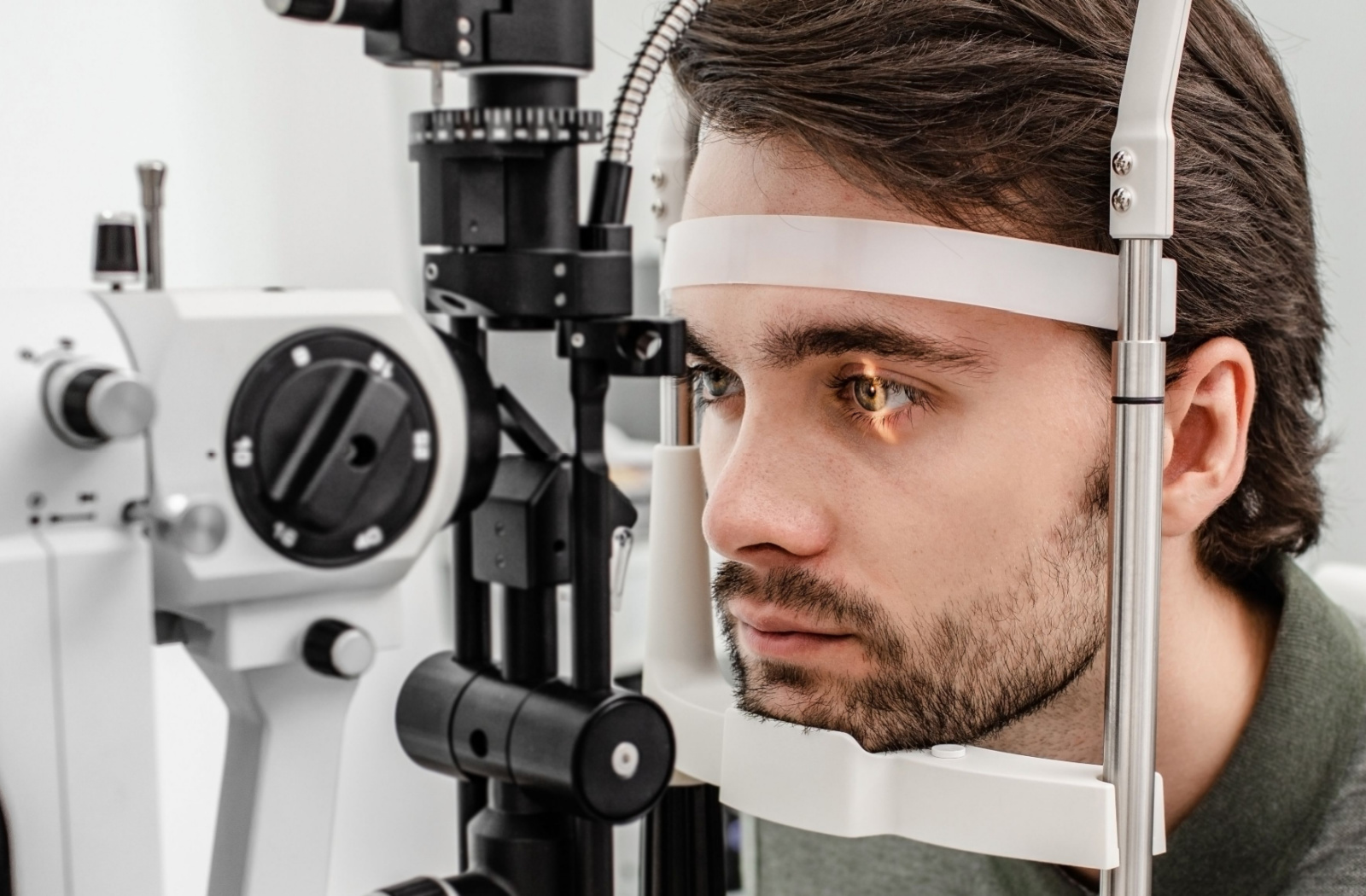Myopia and astigmatism are common forms of refractive errors that affect your vision. While they share some similarities, they also have some differences.
Myopia and astigmatism cause similar symptoms, but they are not the same—they can have slightly different causes and effects on your vision. Myopia, or nearsightedness, occurs when the eye is too long or the cornea is too curved and causes faraway objects to be blurry. Astigmatism, on the other hand, occurs when the cornea—or the lens inside the eye—is misshapen to some extent, causing blurry vision at all distances.
It is essential to visit an optometrist for a comprehensive eye exam if you’re having difficulties with your vision so you can receive proper treatment and care.
What Is Myopia?
Myopia, also known as nearsightedness, is a common eye condition. It’s a form of refractive error, meaning that when you’re affected by it, your eye doesn’t bend—or refract—light properly. The changes in refraction that myopia causes can make distant objects appear blurry while close objects remain clear.
When your eye is properly shaped, it can refract light directly on your retina, which sends information through your optic nerve to your brain. But when your eye is elongated, light will often focus in front of the retina, causing blurry distance vision.
The Symptoms of Myopia
When you have myopia, you may experience:
- Difficulty seeing objects at a distance
- Constant squinting to see clearly
- Frequent headaches as your eyes overwork themselves to see clearly
Many people experience the effects of myopia in differing levels of severity. Some people can see clearly for several dozen feet, while others can’t focus on objects more than a few feet away. At any level, nearsightedness can have a significant impact on your day-to-day life if you leave it unaddressed.
What Is Astigmatism?
Astigmatism is another common type of refractive error. Rather than a problem with the length of the eye, astigmatism is caused by an irregularly curved cornea or lens.
An irregular curve in your cornea or lens can cause light to scatter or bend improperly as it enters your eye. Instead of the light focusing on a singular point, it may hit several different areas on your retina and within your eye.
Unlike myopia—which affects clarity the further away things are from the eye—astigmatism makes objects appear blurry at most, if not all, distances.
Are There Different Types of Astigmatism?
There are several types of astigmatism, but there are 2 primary types:
- Corneal astigmatism, where the cornea (the clear front surface of the eye) is misshapen.
- Lenticular astigmatism, where the lens inside the eye is misshapen.
Alongside the types above, there are 2 sub-categories of astigmatism:
- Regular astigmatism, where the cornea or lens—while still shaped incorrectly—has a uniform curve.
- Irregular astigmatism, where the irregular curve that causes astigmatism isn’t uniform or even.
All the types of astigmatism above can cause blurry vision.

What Are the Symptoms of Astigmatism?
Similar to myopia, people with astigmatism can experience symptoms to different degrees. Some of the common symptoms of astigmatism include:
- Blurry, distorted, or fuzzy vision at all distances
- Difficulty seeing at night
- Eye strain or discomfort
- Frequent headaches
- Occasional double vision
- Light sensitivity
- Halos around light sources
Some of these symptoms could be signs of other conditions as well, so it’s essential to visit an eye doctor and get a clear diagnosis if you experience any changes to your vision.
How Are Myopia & Astigmatism Treated?
Fortunately, since both myopia and astigmatism are common forms of refractive error, there are several forms of treatment and support available to help you see clearly. If you’re experiencing any of the symptoms of myopia or astigmatism, you should book a comprehensive eye exam to get a clear diagnosis from an eye doctor.
After we see you for an eye exam, we can recommend different options for helping you see clearly, such as:
- Prescription glasses to correct refractive errors by compensating for the shape of your eye.
- Contact lenses (which function similarly to eyeglasses but utilize a different prescription)
- Myopia control to help children reduce the effects of myopia on their sight and eye health
- Laser eye surgery procedures, such as LASIK or PRK
Remember, every person’s eyes are different, so some treatments may be more suitable than others for different people. With a comprehensive eye exam, we can gain a better understanding of your eyes and recommend a form of treatment that supports your needs.
Visit Your Optometrist
Regular visits with an eye care team, like our team at Broadway Eyecare, are an essential part of maintaining your vision and eye health. When you experience any issues with your vision, book an appointment with us for a comprehensive eye exam. Your eyes are our top priority.










